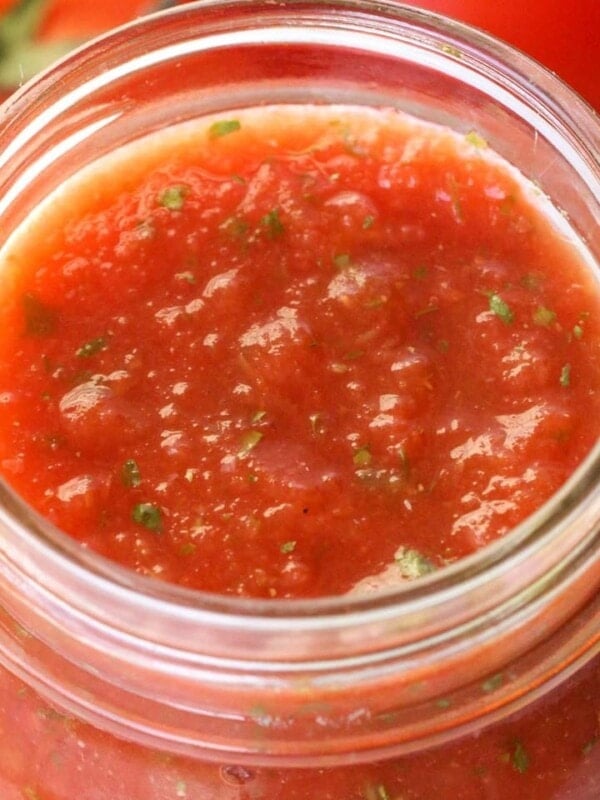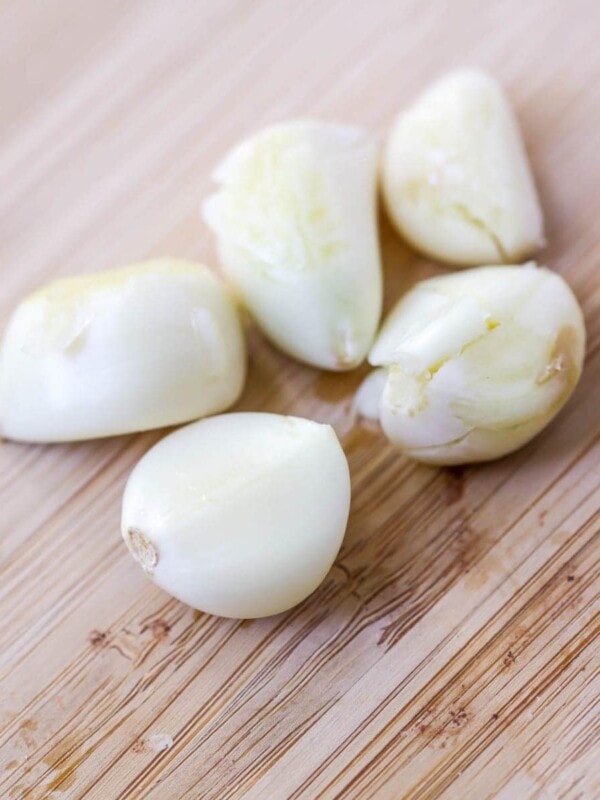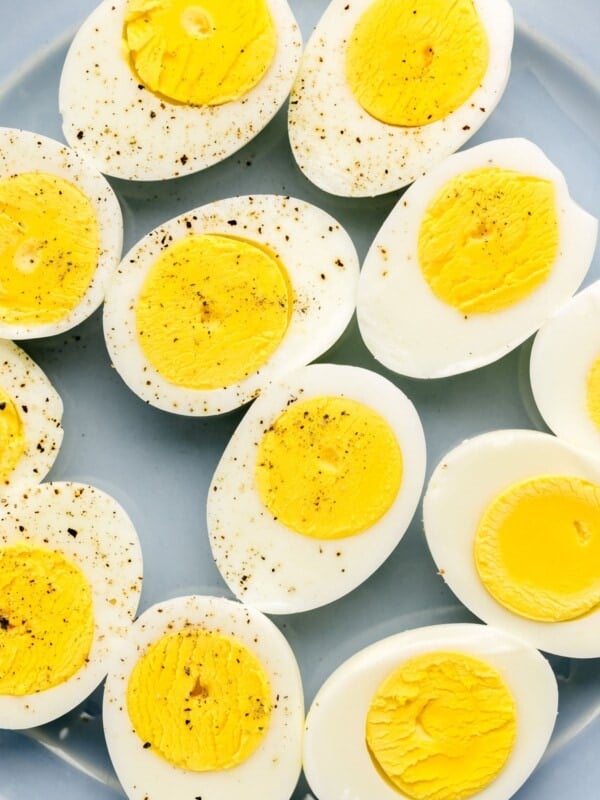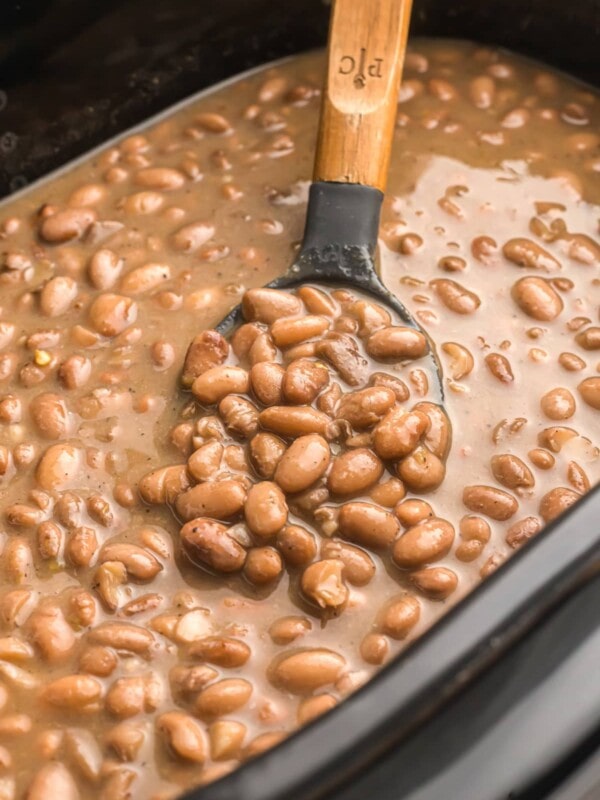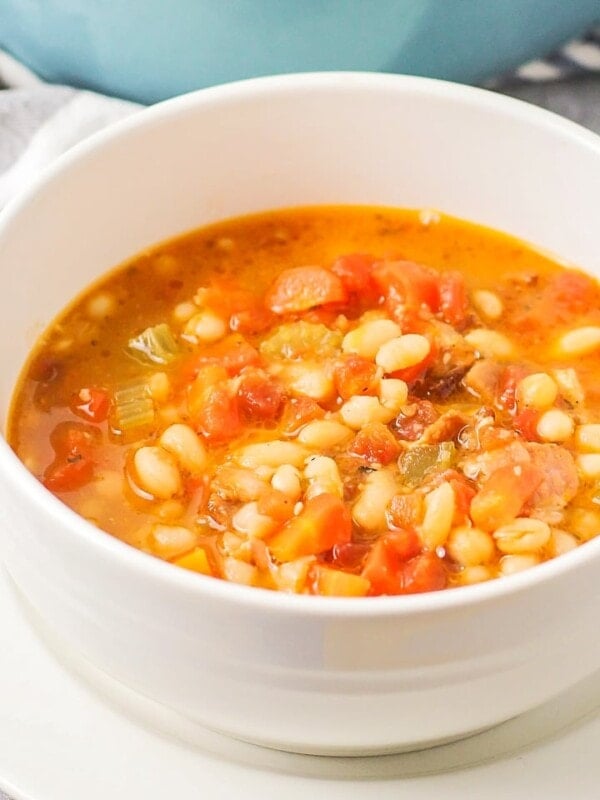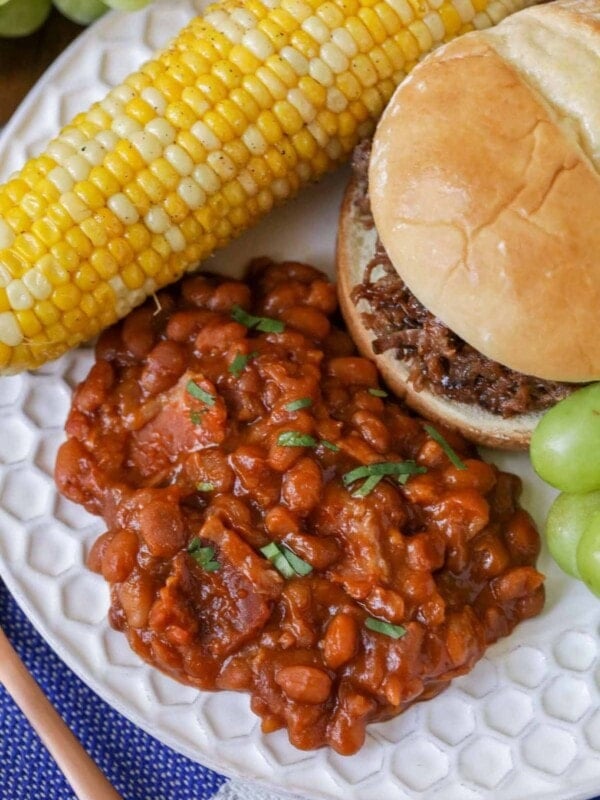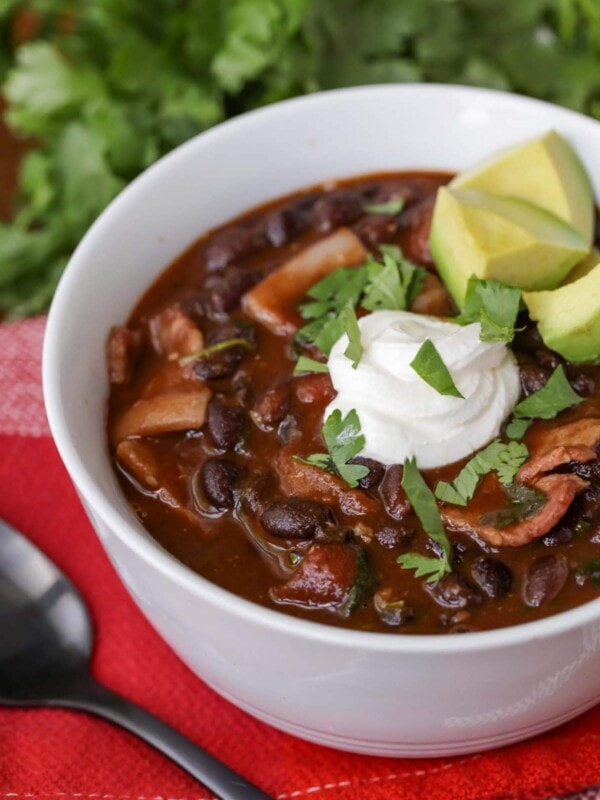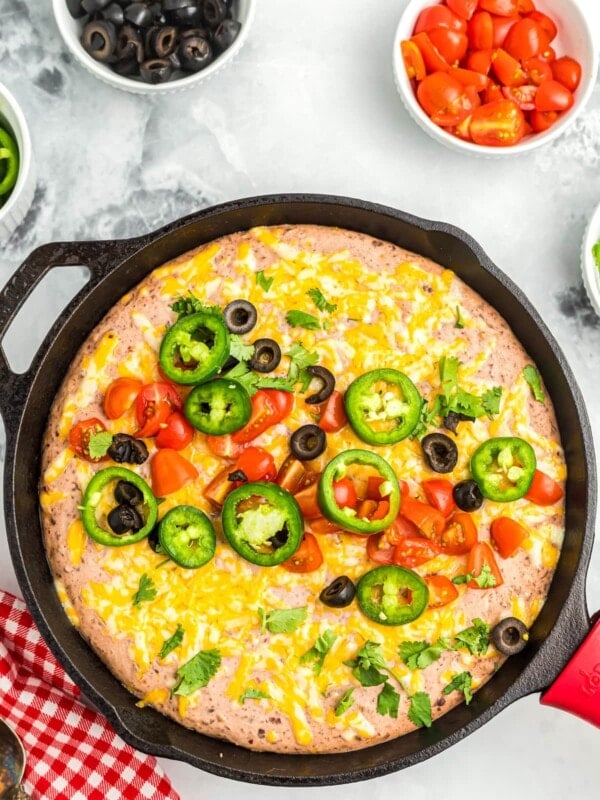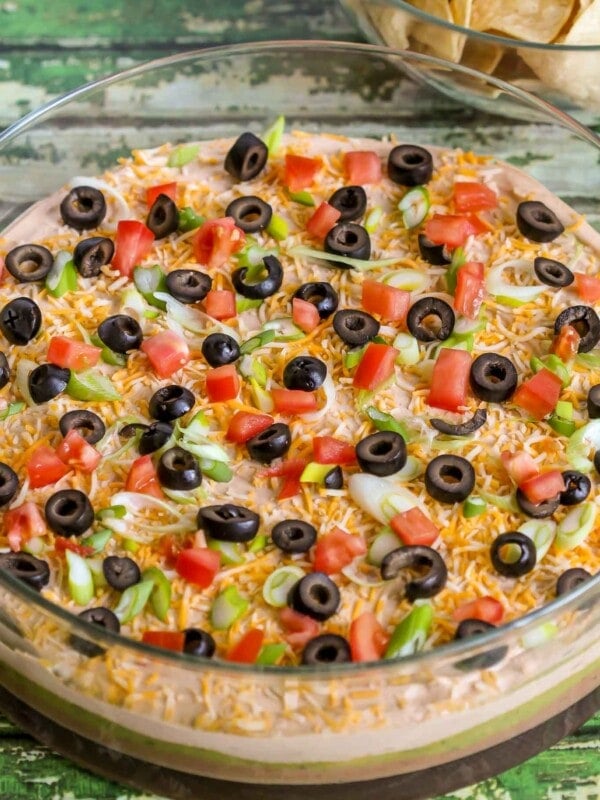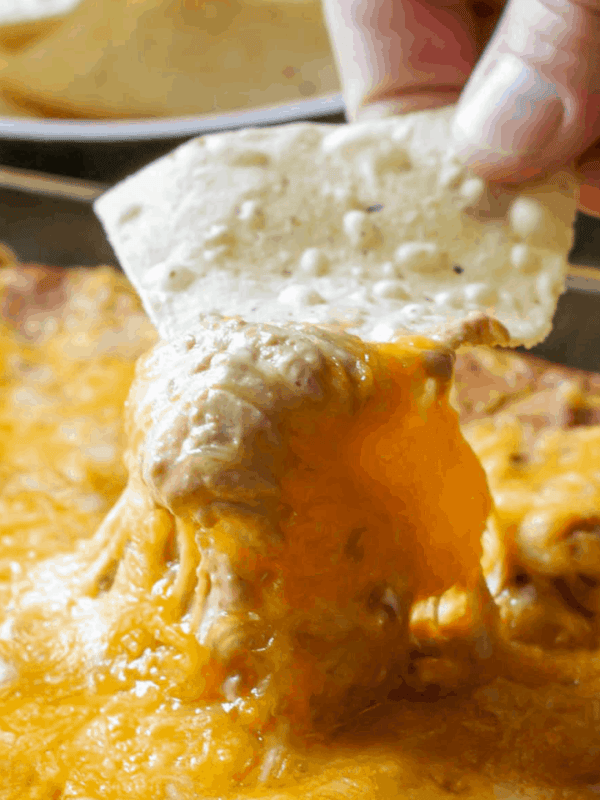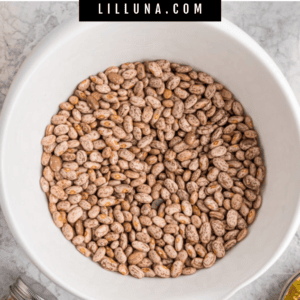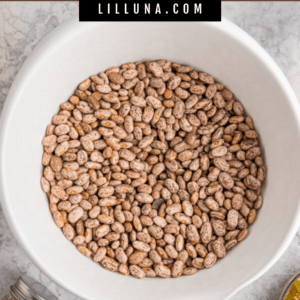This post may contain affiliate links. Please read our disclosure policy.
If you prefer dried beans over canned beans, learning how to cook dried beans is a must! Follow these easy steps to cook dried beans to perfection every time.

Dried Beans Vs. Canned Beans
Dried beans vs. canned beans, which is better? They’re both great options and there are pros and cons to both! While cooking dried beans might take a little more time, we love using dried beans over canned for a few reasons. First, dried beans are generally cheaper and you get more bang for your buck! Second, dried beans tend to be a little healthier and more flavorful because you know exactly what you’re adding in and have control over what ingredients you want to add.
One of our favorite dried bean recipes to share is our Crock Pot Pinto Beans. The best part of cooking dried beans is that you can make them in large quantities and use them for various dishes. We love making a batch of beans to use in various recipes, like soups, Mexican Bean Salad or Chili, or to serve alongside of our Mexican dishes!
Why We Love Cooking Dried Beans:
- Cost-effective. Dried beans are significantly cheaper than canned beans, especially when purchased in bulk. This can lead to so many savings on your grocery bill over time.
- Flavorful. Cooking dried beans from scratch allows you to control the flavor. You can experiment with different herbs, spices, and cooking methods to create unique and delicious dishes.
- Nutrient-packed. Dried beans are packed with protein, fiber, and other essential nutrients. By cooking them yourself, you can avoid the added sodium and preservatives that are found in canned beans.
Table of Contents

Safety Considerations
When cooking dried beans, it’s important to be aware of the potential risks of consuming undercooked beans. For example, kidney beans contain a natural toxin called phytohaemagglutinin (kidney bean lectin), which can cause illness if the beans aren’t fully cooked. While using a crock pot is a popular and convenient method, make sure the beans are thoroughly cooked, as crock pots can vary in temperature. Undercooking could leave the beans unsafe to eat, so always ensure they’re properly cooked to avoid any health risks.
Bean Types, Sizes, & Cook times
Small Beans: 1-2 Hours
- Black beans
- Navy beans
- Pinto beans
Medium Beans: 1-2 Hours
- Great Northern beans
- Kidney beans
- Cannellini beans
- Black-eyed peas
Large Beans: 1-3 hours
- Butter beans (Lima beans)
- Chickpeas (Garbanzo beans)
- Fava beans
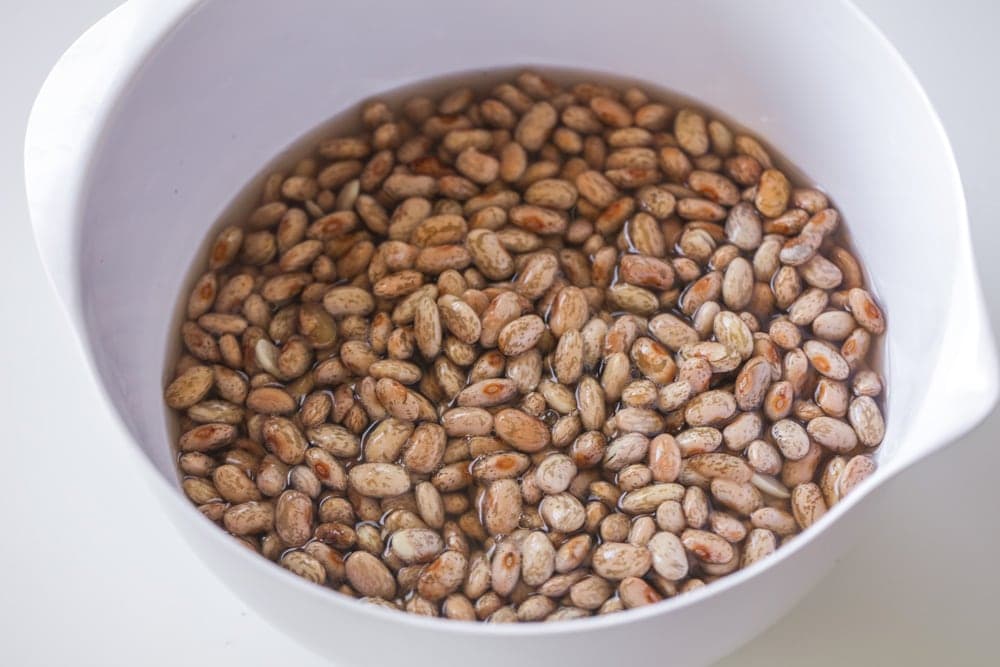
Supplies
- 1 (16-ounce) package of dried beans – Pinto, Navy, Kidney, Cannellini or whatever dried bean you prefer!
- aromatics, optional – You can add aromatics such as a bay leaf, thyme, a few garlic cloves, or chopped onions.
- colander
- large bowl, optional – for soaking the dried beans
- large pot – or crockpot or Instant Pot
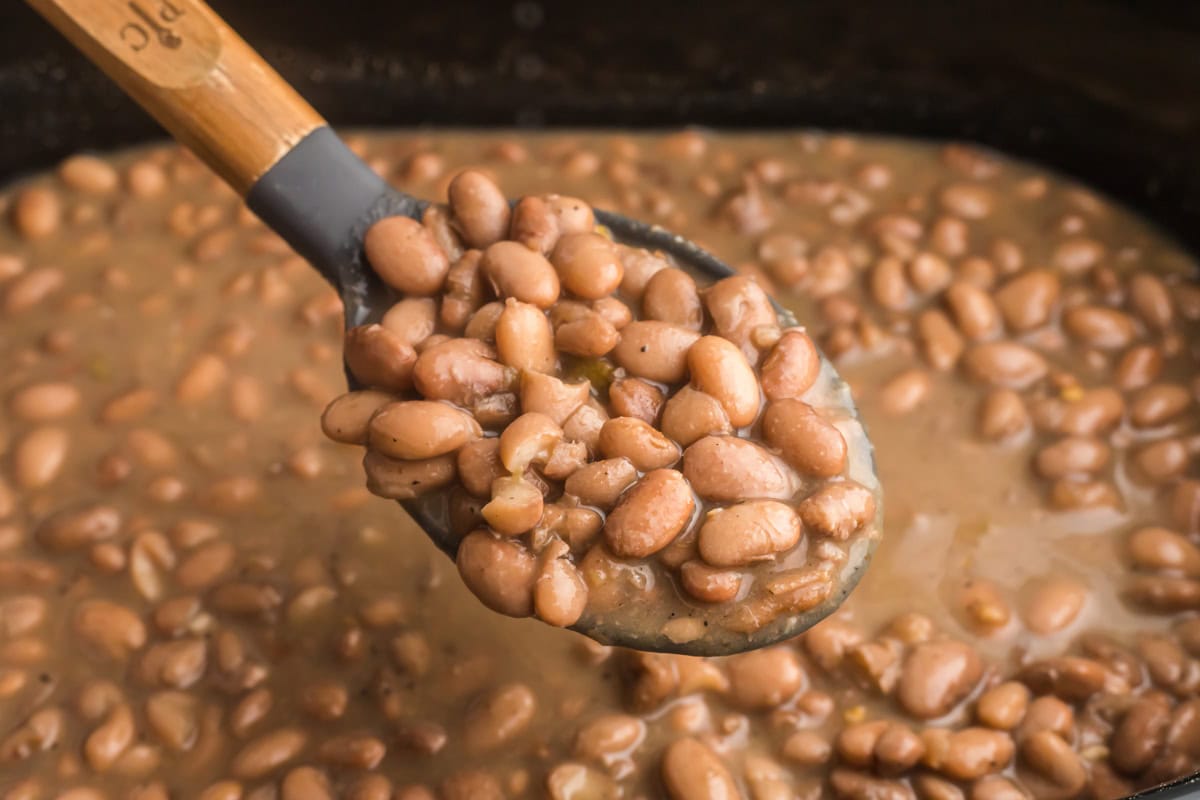
How to Cook Dried Beans (Stovetop)
- SORT. Pour the dried beans into a colander and rinse them under cold water. As you do this, inspect the beans to remove any small stones, dirt, dust, or shriveled beans.
- SOAK. Soaking dried beans is optional but highly recommended! It reduces cooking time and helps remove toxins. Hard water can prevent beans from absorbing moisture, so use distilled or purified water. There are two soaking methods: overnight soaking or a quick soak.
- Overnight soak. Place the beans in a large bowl and cover them with water. Use about 3 cups of water for every 1 cup of beans. Let them soak overnight or for at least 8 hours.
- Quick soak. If you’re short on time, place the beans in a large pot, cover with water, and bring to a boil. Boil for 2 minutes, then remove from heat and let the beans soak for 1 hour.
- DRAIN. After soaking the beans using the method of your choice, drain the beans and rinse them with fresh water.
- ADD. Place soaked beans in a large pot and cover them with fresh water. For extra flavor, you can add aromatics such as a bay leaf, thyme, a few garlic cloves, or chopped onions.
- COOK. Heat the pot over medium-high heat and bring the water to a boil. Once boiling, reduce the heat to low, cover the pot, and let the beans simmer. Cooking times will vary based on the type of beans. Don’t forget to stir occasionally!
- CHECK. Now it’s time for the best part.. a taste test! Make sure your beans have the perfect texture. The beans are done when they are tender and can be easily mashed with a fork. If they’re not tender, continue cooking, adding more water if necessary.
- STORE. If you’re not enjoying your cooked beans right away, let them cool in the cooking liquid to continue soaking in the flavors. When you’re ready, store them in their cooking liquid in the refrigerator for up to 5 days or freeze them for up to 3 months.
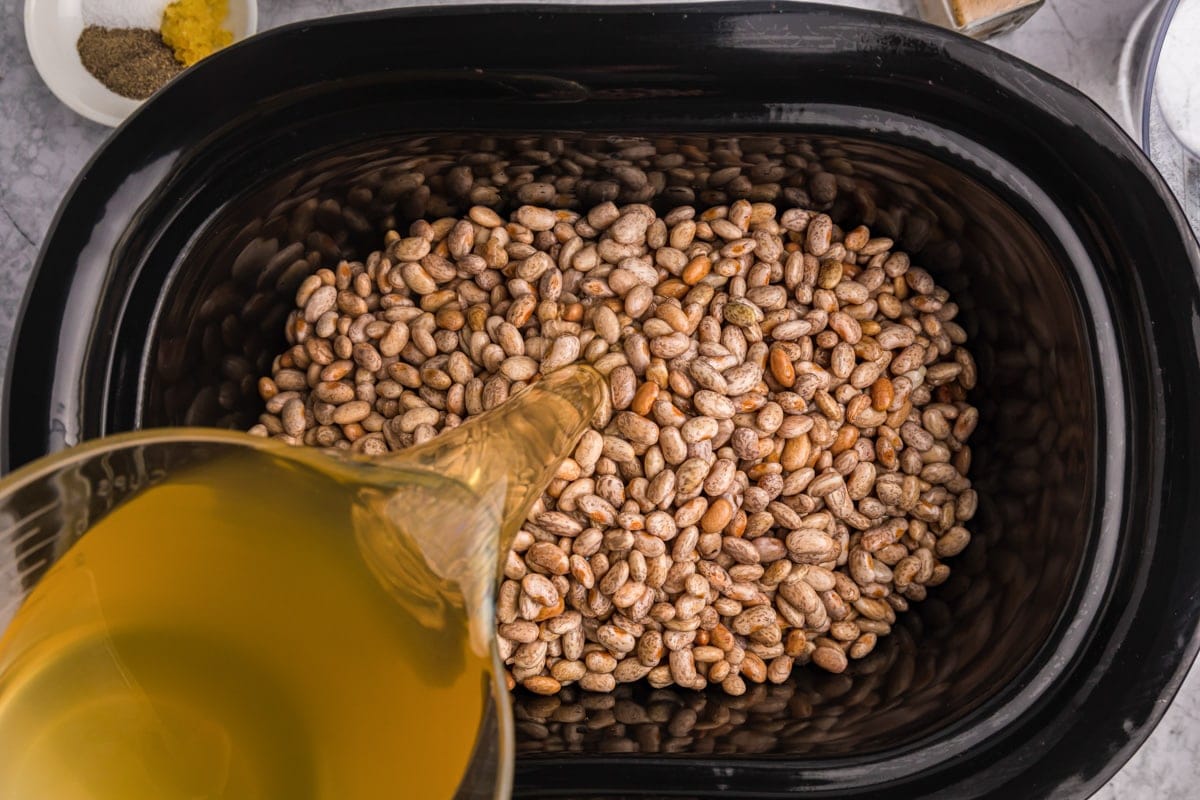
Other Methods To Cook Dried Beans
Using a pot on the stove is the most common method for cooking dried beans, but there are two other convenient options: the Instant Pot and the slow cooker or crock pot. If you decide to go with one of these methods, you can use steps 1-5 from above to prep your beans.
- Instant Pot: Add the soaked beans with fresh water, set it to high pressure, and cook for 25-30 minutes, allowing the pressure to release naturally.
- Slow Cooker: Just remember, as we mentioned earlier, it’s very important to make sure you’re cooking the beans thoroughly and slow cooker temps can vary. For this method, simply add the beans and water, then cook on low for 6-8 hours or on high for 3-4 hours until they’re tender.
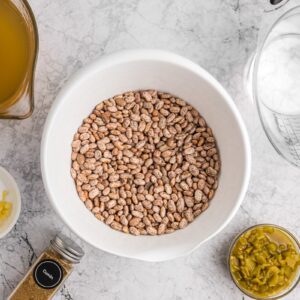
How To Cook Dried Beans
Ingredients
- 1 (16-ounce) package dried beans of your choosing
- aromatics, optional
Instructions
Stovetop
- Pour the dried beans into a colander and rinse them under cold water. As you do this, inspect the beans to remove any small stones, dirt, dust, or shriveled beans.
- Soaking dried beans is optional but highly recommended! It reduces cooking time and helps remove toxins. Hard water can prevent beans from absorbing moisture, so use distilled or purified water. There are two soaking methods: overnight soaking or a quick soak.Overnight: Place the beans in a large bowl and cover them with water. Use about 3 cups of water for every 1 cup of beans. Let them soak overnight or for at least 8 hours.Quick soak: If you’re short on time, place the beans in a large pot, cover with water, and bring to a boil. Boil for 2 minutes, then remove from heat and let the beans soak for 1 hour.
- After soaking the beans using the method of your choice, drain the beans and rinse them with fresh water.
- Place soaked beans in a large pot and cover them with fresh water. For extra flavor, you can add aromatics such as a bay leaf, thyme, a few garlic cloves, or chopped onions.
- Heat the pot over medium-high heat and bring the water to a boil. Once boiling, reduce the heat to low, cover the pot, and let the beans simmer. Cooking times will vary based on the type of beans. Don't forget to stir occasionally!
- Now it's time for the best part.. a taste test! Make sure your beans have the perfect texture. The beans are done when they are tender and can be easily mashed with a fork. If they’re not tender, continue cooking, adding more water if necessary.
- If you're not enjoying your cooked beans right away, let them cool in the cooking liquid to continue soaking in the flavors. When you're ready, store them in their cooking liquid in the refrigerator for up to 5 days or freeze them for up to 3 months.
Instant Pot
- Follow steps 1-5 from above to prep your beans.
- Add the soaked beans with fresh water, set it to high pressure, and cook for 25-30 minutes, allowing the pressure to release naturally.
Slow Cooker
- Follow steps 1-5 from above to prep your beans.
- Add the beans and water, then cook on low for 6-8 hours or on high for 3-4 hours until they're tender.
Nutrition information is automatically calculated, so should only be used as an approximation.
More Like this
Kitchen Tips
Bean Recipes
Crock Pot Pinto Beans
12 hrs
Navy Bean Soup
5 hrs 20 mins
Baked Beans Recipe
4 hrs 5 mins
Black Bean Soup
40 mins
Bean Dips
FAQs
This can happen for a few reasons: old beans, hard water, or undercooking. To address this, try using fresher beans, cooking with filtered or distilled water, and increasing cooking time.
Overcooking is the most common culprit for mushy beans. To prevent this, check your beans frequently towards the end of the cooking time. If they’re starting to soften, reduce the heat or remove them from the heat source. Adding a tablespoon of olive oil or a pat of butter to your cooked beans can help prevent them from becoming mushy.
To prevent this, sort your beans before cooking to remove any stones or debris. Also, avoid overcrowding the pot. If you’re using a pressure cooker, make sure to release the pressure naturally to allow the beans to finish cooking evenly.
We recommend adding salt when you begin cooking the beans. This gives the salt time to fully soak into the beans for more flavor and also helps them retain their shape.
